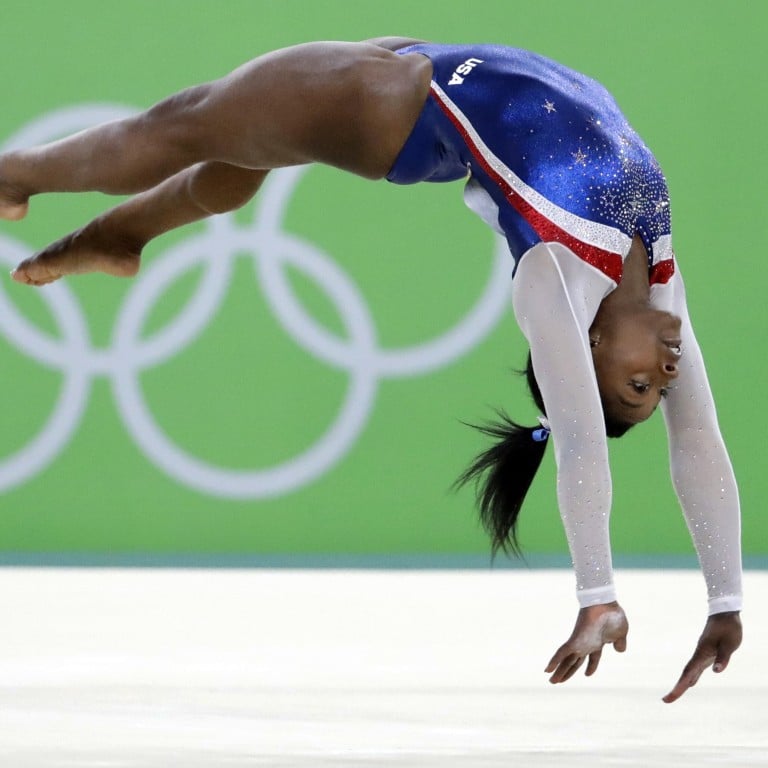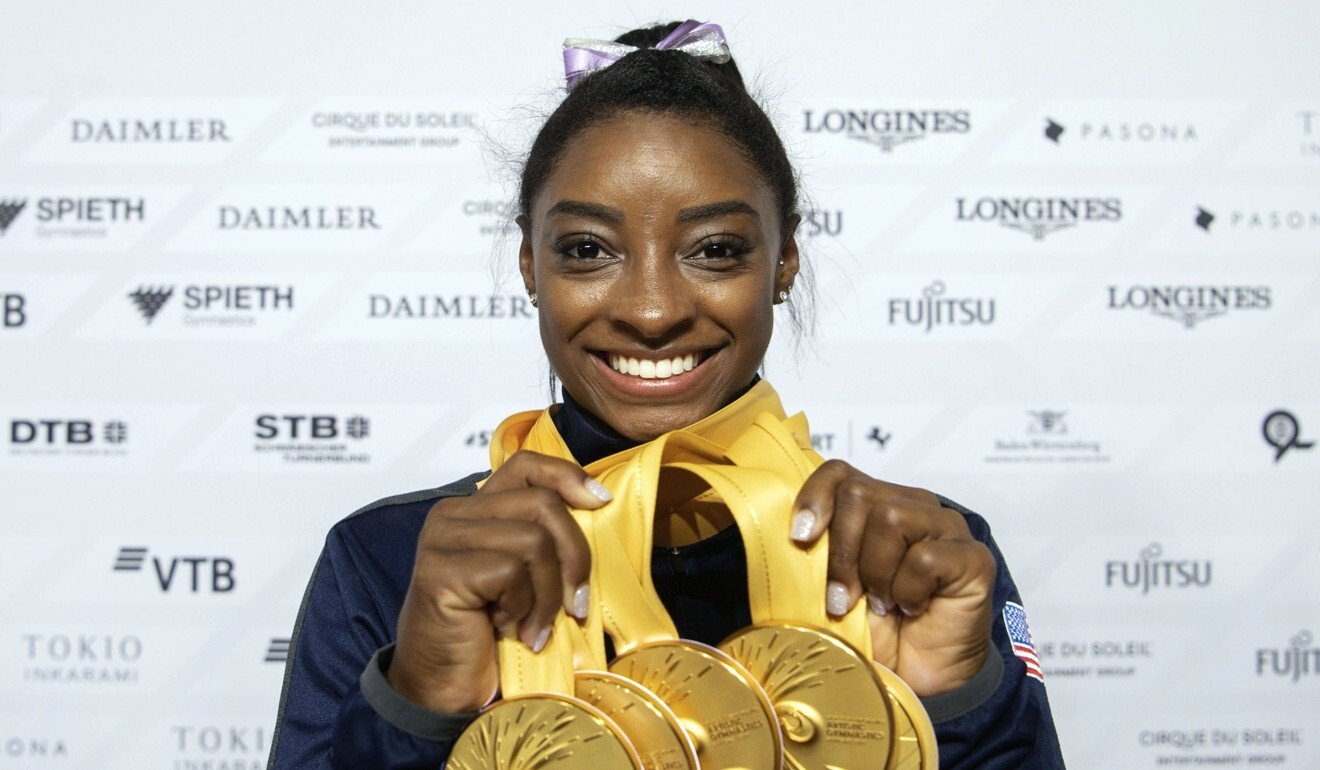
Profile | Simone Biles: biography, height, Yurchenko double pike and repeating historic Olympic Games success
- From her difficult childhood to winning four Olympic gold medals, here’s what you need to know about the 1.42-metre American
- The USA’s most decorated gymnast is equally influential off the floor, often calling out discrimination and bigotry
Four-time Olympic gold medallist Simone Biles is the USA’s most decorated artistic gymnast, but the magnitude of her influence goes well beyond floors, beams and vaults.
Biles has often spoken out about racial and gender discrimination, the horrific USA Gymanastics sex abuse scandal of 2018 of which she was a victim, the subsequent lack of organisational accountability, and why she “would not feel comfortable” allowing her future daughter to take part in the sport.
From being sent into foster care as a child, to debuting and winning at the national championships aged 15, and landing the fabled Yurchenko double pike vault – a feat no woman had ever completed, here’s what you need to know about the woman adoring fans call “$imoney”.

Biography
Simone Arianne Biles was born on March 14, 1997 in Columbus, Ohio. She is one of four children, all of whom reportedly taken into foster care at a young age. Despite the early uncertainty, Biles and her sister were eventually adopted by their biological grandparents. She joined her first gymnastics class aged five and began her lightning-quick ascent into the US history books.
Biles made her senior debut at the US national championships aged 15, claiming her first all-around championship among several individual medals. The following year, she did the same at the world championships, becoming the first African-American woman to do so. By the 2016 national championships, she was winning gold in the vault, floor exercise and balance beam.

During arguably the greatest year of her career, Biles became a household name at the 2016 Rio Olympics having won golds in the team, all-around, vault and floor exercise events, and a bronze in the balance beam. It was the most golds won by a US women’s gymnast at a Games.
In 2018, she became the first US competitor to win a medal in every world championship event in her sport. A year later, she etched another line in history as the first woman to successfully land a triple twisting double somersault in the floor and a double off the balance beam.
Height
Biles stands at a humble 4-foot-8 (1.42 metres), according to her website. She was the shortest US competitor at the 2016 Games and is likely to hold the same accolade in Tokyo.
Though some would assume that her height enables a comparatively low centre of gravity and thus improves her performance, it is widely considered remarkable that she can jump to such heights and lengths during competition.
During her time at Rio 2016, she tweeted a photo of herself with national volleyball team player David Lee, all 6-foot-8 of him. The confident caption read: “size difference in Olympians doesn’t matter, depending on what sport you do. 6’8” & 4’8”.
Five years on and Biles’ trademark confidence is still apparent. Keep a lookout for “Goldie”, the bedazzled goat embroidered onto her game-day leotard representing her ascent to G.O.A.T (greatest of all time) status. It is an intentional “hit back at the haters” who “were joking like, ‘I swear, if she put a goat on her leo, blah blah blah’,” she told Marie Claire this month.
“I just hope that kids growing up watching aren’t ashamed of being good at whatever they do.”
Yurchenko double pike
Biles did the unthinkable at the US Classic last month, her first competition in more than a year and a half. She completed a move called the Yurchenko double pike – an add-on to former Soviet gymnast Natalia Yurchenko’s infamous vault entry some three decades ago.
The move had never been attempted at a female competition because of its sheer difficulty and the severe injury risks involved, according to The Washington Post. She was awarded the highest-value vault score in the sport, but still maintains that the current scoring system does not adequately reflect the stunt’s difficulty nor does it give much incentive to perform the move in future.
It was by no means a fluke; rather, months of meticulous training and overcoming the mental barrier of its extremely dangerous consequences if performed wrong. She told Insider that she would be “praying” on the vault runway every time she would line up for the specific move.
She had previously posted a teaser video landing it in a safety foam pit in training. The post went viral as teammates and pundits identified that she had made the previously deemed impossible rotations with ease.
However, it is unlikely that Biles would execute such risky combinations in Tokyo. Aside from the judging criteria – what she put down to the “risk vs reward” factor – she simply does not need to as her original routines already suffice in terms of difficulty. She will probably bring it out at selected competitions though – “because I can”.

